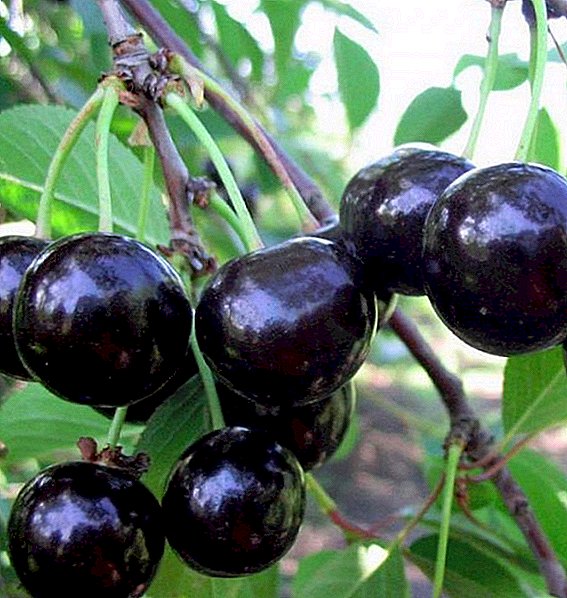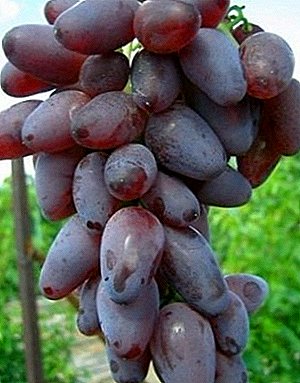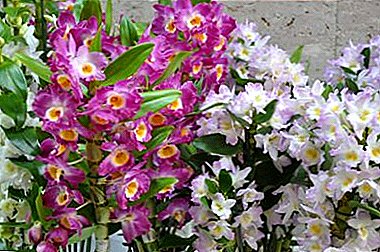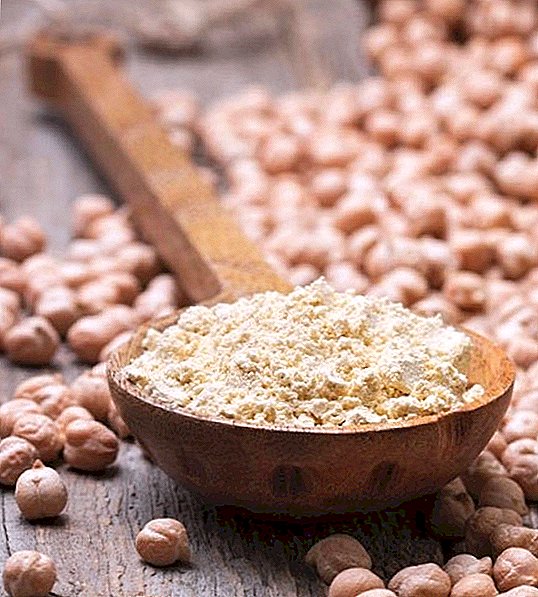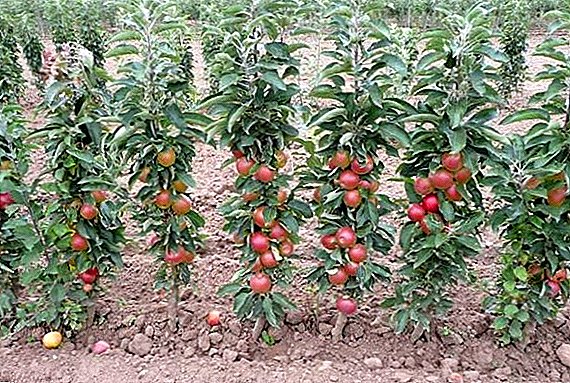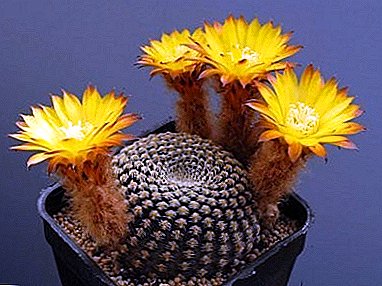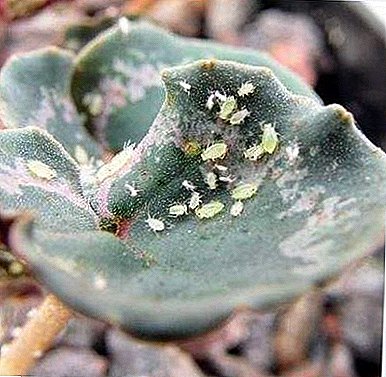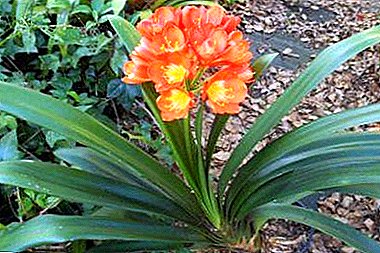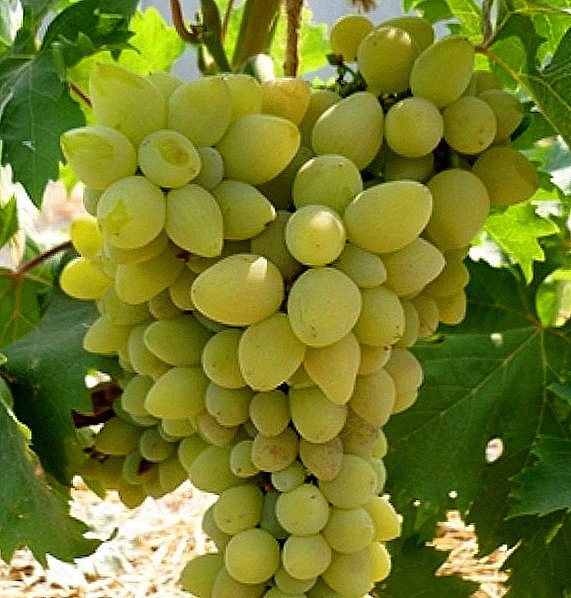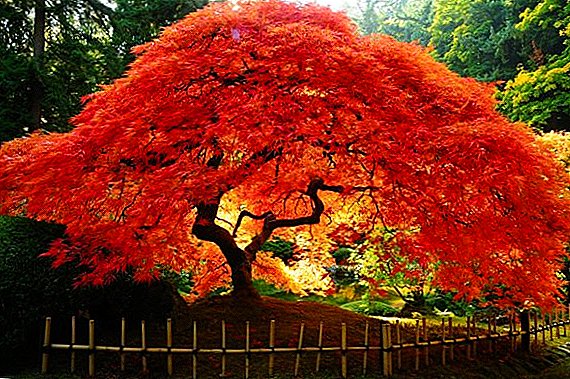 Those who are looking for low plants that can be planted as a hedge or to create a shady corner, landscape designers are advised to pay attention to the ginnal maple. This is a small tree with a wide crown, which will help to cover your summer cottage from prying eyes, protect it from drafts, cover it from the sun, and in the fall will delight you with beautiful foliage coloring. How to grow a tree and how it needs care, you will learn from the article.
Those who are looking for low plants that can be planted as a hedge or to create a shady corner, landscape designers are advised to pay attention to the ginnal maple. This is a small tree with a wide crown, which will help to cover your summer cottage from prying eyes, protect it from drafts, cover it from the sun, and in the fall will delight you with beautiful foliage coloring. How to grow a tree and how it needs care, you will learn from the article.
Appearance and botanical description
Cannon or maple maple (Acer ginnala) belongs to the same genus and family Sapindovye. It is not too tall deciduous shrub or tree. 
Height. Reaches growth from 3 to 8 m.
Trunk. Short. It grows in diameter from 0.2 to 0.4 m.
Crown. Wide, in the form of a tent. Reaches in diameter from 5 to 7 m. 
Bark. It has a thin smooth structure, painted in brown and gray. The old trees are cracking.
The branches. Thin, upright growing. Reddish or brown.
Root system Superficial, dense.
Leaves. Opposite, simple. Reach lengths from 4 to 10 cm, widths - from 3 to 6 cm. Divided into three blades. The average share is somewhat extended. With age, dissection becomes less noticeable. The leaves grow on straight petioles with a length of 3 to 5 cm, which often have a pinkish tint. They have a smooth surface, painted in dark green. 
Flowers Appear in the spring - then, when the leaves fully bloom. Have a yellow-green color. Medium in size - from 0.5 to 0.8 cm in diameter. Combined into inflorescences in the form of brush-panicles. Have a light pleasant aroma. Flowering lasts from 2 to 3 weeks. 
Fruit. At the end of the summer there are paired lionfish. Their length is from 0.8 to 1 cm and in width from 3 to 6 cm. First, the fruits are painted in a reddish color, then brown. 
Growth rate. Moderate. Growth for the year ranges from 30 to 50 cm.
Lifespan. This long-lived tree - on average, lives up to 100 years, but older specimens, which marked the 250th anniversary, are also recorded.
Did you know? The maple leaf has been used by Canadians as a state symbol since the 18th century. And since 1965, he was captured on the official flag of Canada. The fact is that sugar maples are the most important economic resource of the state, they are used in the production of wood, the extraction of sugar, for the preparation of useful maple syrup.
Where is growing
The habitat of this maple species is East Asia, Southeast Siberia. It is found in the eastern regions of Mongolia, in Korea, Japan, and China. It grows on the banks of rivers, sea coasts. Because of the latter feature, and received its second name - riverine. It can also be found on the mountain slopes, in light forests. 
Natural meaning
This variety is an excellent honey plant. Honey collected from ginnal maple contains 2.5% sugar and up to 30% tannins.
Familiarize yourself with the most popular maple species: red, Norway, Tatar, Manchu, Japanese, and ash-leaved (American).Birds lodge in the thick crown of the tree, its seeds adore bullfinches. Buds and twigs love to eat squirrels.
Application in landscape design
The river maple remains decorative throughout the growing season. He has a very beautiful crown, it is original when it blooms. After ottsvetaniya its decoration become lionfish. The peak of decorativeness occurs in the autumn months - it is then that the leaves turn yellow, orange and fiery red. 
This type is widely used in park culture since the XIX century. Use in group and single landings. Planted on the banks of rivers, ponds, curbs. His best neighbors are dogwood, loch, coniferous crops, snowberry.
In culture, this species is most common in northern Europe and in North America. In Japan, it is used in the decorative art of bonsai.
Due to its rich composition, maple is endowed with a whole range of healing properties. Read about the use of maple in traditional medicine.
Growing conditions
Ginnala Maple - not too pretentious plant. Although certain requirements for the place of growth makes. So, the tree can reach the highest degree of decorativeness only when landing on a well-lit area. Light shading is allowed. 
Important! If you plant a river maple in the shade, it will lose its zest in the fall in the form of red leaves. Like most other plants, they will be yellow.This variety should be planted in the area where there is no close bedding. If this is not possible, then you need to take care of the equipment of high-quality drainage - in the landing pit should lay a 10-20-centimeter layer of gravel. If the soil is too limy, peat should be mixed into it. Poor soils can be fertilized by applying in the fall under the digging of humus or compost (4-8 kg per 1 sq. M).
By the composition of the soil, this maple is not demanding, can survive on any soil, except the heavy. The optimum pH level is 6-7.5. If there is heavy soil on the site, it will be necessary to deposit river sand before planting the tree. The plant does not tolerate salinization, it begins to develop problems. Therefore, it is important to ensure that this does not happen.
To find out which soil for the plant will be most favorable, read how to independently determine the acidity of the soil in the area.
 Determination of soil acidity with special devices
Determination of soil acidity with special devicesDespite the fact that the tree has a superficial root system, due to the fact that it is thick and strongly branched, it normally carries the wind, so it is not terrible if the site is not protected from drafts.
As for winter hardiness, this variety is one of the strongest and resistant to frost, therefore it grows without problems in the northern regions.
Landing rules
Planting can be made in spring and autumn. It is important to properly prepare the landing hole. This process begins two to three weeks before the seedling is placed into it. It is excavated with a size of 0.7 m in depth and 0.5 m in width; humus and mineral fertilizers are added.  Digging a hole for planting maple
Digging a hole for planting maple
The soil mixture is prepared from the following components:
- humus (peat compost) - three parts;
- sod land - two parts;
- sand is one part.
Before planting the bottom of the pit must be well loosened. To do this, you can pierce it several times with a fork.
If the plants are planted in a hedge, then it is necessary to dig a trench and plant it, leaving a distance of 1-1.5 m. In this case, the root neck can be slightly deepened - up to 5 cm.  We dig a trench for planting maple
We dig a trench for planting maple
Sapling must be selected in a specialized nursery. It is better to take a two-year copy. He must be healthy looking, with no signs of wilting, defects, damage. If the root system of the seedling is open, then you need to make sure that everything is in order with it, it is sufficiently developed and does not have lesions with rot or other diseases.
Carefully place the seedling in the prepared landing pit and straighten the root system. The root neck at the same time should be at ground level. Then the pit is filled with the prepared mixture. After lightly tamped.  Planting Ginnal Maple
Planting Ginnal Maple
Immediately after planting, the plant will need to be plentifully watered, and the soil in the near-stem circle will be mulched using peat, straw, lapnik, sawdust. Mulch is laid in a layer of 5-10 cm. She will allow to keep moisture at roots, to warm them in the winter and to save from emergence of weeds.
If you want to protect the plant from possible natural troubles, find out why you need soil mulching, especially the application of agricultural practices.
Care Tips
After planting, the maple will require minimal care efforts, which will be to:
- watering;
- dressing,
- loosening the soil;
- weeding;
- haircut.

Important! When watering, the water should soak the ground 0.5 m deep.After irrigation, in order to avoid the hardening of the earth in her circle of a circle it will be necessary to loosen. Loosening is made shallow - by 5-7 cm in order not to damage the surface root system.
Periodic weeding will also be required to get rid of weeds that take the life-giving moisture and nutrients from the maple.
In the event that no mineral fertilizers are applied during planting, a year after planting, in the spring, the tree will need to be fed. For this purpose, use of urea (40 g per 1 sq. M.), Potassium salt (15-25 g), superphosphate (30-50 g).  Urea
Urea
In the summer, during loosening, you can make a comprehensive fertilizer. Suitable "Kemira Universal" (100 g per 1 sq. M).
The first haircut must be made a year after planting (spring). Pruning maple pruning tolerates very well - quickly restored. Since its shoots have a peculiarity to form long internodes, and the trunk grows very quickly, it is desirable to leave no more than 7-10 cm of growth every year when cutting to achieve the desired height of the fence, while respecting its shape in the form of a trapezoid. Only after that it will be possible to produce a haircut on a pattern.
To improve the maple and direct its growth in the right direction, find out all the features of pruning in spring, autumn and summer.

When making maples in the form of borders, they are regularly cut, leaving no more than 0.5 m in height.
Despite the fact that the river maple is characterized by high winter hardiness, the first years after planting its root system will still have to be covered before the winter period. It is suitable for spruce branches, dry leaves. As it grows, winter hardiness will increase, and the tree will no longer need this procedure.
Maple has a good immunity, but not one hundred percent. It can suffer from coral blotch, which manifests itself as red spots on the bark. With the defeat, the diseased branches are removed, the cut sites are covered with garden pitch, and the tree is sprayed with blue vitriol.  Coral spotting
Coral spotting
Powdery mildew is another dangerous disease for maple trees. If there are signs of infection - white mealy plaque on the leaves - the plant should be ground gray with lime in a ratio of 2 to 1.
Read how to grow a home maple (abutilon).The river maple has a number of ill-wishers in the form of harmful insects: whitefly, mealybug, weevil. The maple whitefly can be overcome by spraying with insecticides - "Aktellik", "Aktaroy", "Amofos", etc. The worm is destroyed by treatment with Nitrafen, in the summer - by means of "Karbofos". "Chlorophos" helps to get rid of the weevil.

Did you know? Jack Daniel's whiskey is filtered through charcoal made from American maple.Thus, the ginnal maple is a good choice for those who wish to decorate their land with a beautiful, bright and original deciduous tree. Retaining its beauty throughout the vegetative period, especially the decorative maple in the fall — it is precisely at this time that its leaves turn bright red. In the summer, it will become indispensable for creating a thick shadow. River maple is easy to grow, it does not require special care and quickly grows. It can be grown in areas with a harsh climate, because it is very winter-hardy. Its advantages also include resistance to winds, heat and urban conditions.
Recommendations for growing Ginnal maple
It has one drawback, essential for hedgerows - it dissolves late and leaves the leaves early. But in general, the glenal tree mall is very beautiful.
The height of the fence can be any - from living walls with a height of 2-3 m to a curb with a height of 0.5 m.
Planting pattern: the distance between the plants in a row is 0.5-0.8 m. With a two-row planting, the plants are placed in a checkerboard pattern, the distance between the rows is 0.4-0.7 m.
Since the growth rate is high, you will need 4-6 haircuts per season. For low hedges it is better to use a sloping cut from the sides so that the bottom does not become bare.
The following aspects are important for growing: the soil must be rich in nutrients, and the most important thing is that the hedge from the Ginnal maple loses its decorative effect in the shade, since the plantings are loosened, i.e. need to plant in the sun.

Ps and in our botsad: I saw a pretty field there, and after the first winter I had -50% of what it was (besides it was stitching hard with a lapnik tree !!). In general, and told when I bought :-D



